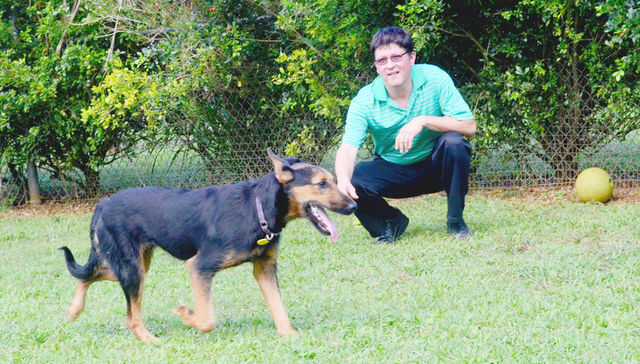PUHI — During the first week of January, 17 animals were transferred to the Mainland from Kauai Humane Society as a direct result of the community’s involvement.
That’s nearing the 19 that were transferred in December 2015, and on pace to match the 35 transferred out in December 2016.
“It’s not always that you put out a call like that and you get this kind of response,” said Scott Pisani, executive director of KHS.
The story started with an anonymous donor who offered to match up to $10,000 of donations made to the KHS transfer program. KHS spread the word and within four days, from Dec. 28 to Dec. 31, the community donated the money.
“The influx of donations for our transfer program is already paying dividends,” Pisani said. “That money will cover more than the 17 animals that have already been transferred out.”
Finding more ways to connect with the community are some of Pisani’s goals for 2017. He said “innovative solutions” are needed to save the lives of more animals.
KHS keeps track of its numbers by fiscal year, which starts July 1 every year.
The most recent numbers come from FY 2014-15 and FY 2015-16.
Between those two fiscal years, euthanasia numbers for cats dropped 26 percent from 1,607 to 1,183, and euthanasia numbers for dogs dropped from 438 to 307, a 30 percent decline.
KHS’s intake numbers dropped 20 percent, from 3,698 animals to 2,974. Adoptions followed that trend, taking a 17 percent plunge from 793 animals to 657.
For cats, the owner surrender intake number dropped 46 percent — 176 cats to 95 this past fiscal year. Dog owner surrenders fell from 451 to 317, a 28 percent decline.
Stray dog intake numbers dropped 19 percent, from 1,119 to 902. Stray cat intake numbers also fell 19 percent, from 1,963 to 1,661.
Overall, KHS reached a benchmark of about 75 percent of the dogs that come through the shelter doors leaving alive. For cats, that benchmark is about 35 percent.
Pisani would like to see those percentages climb and he’s considering ways to accomplish that goal.
“We plan to develop programs that respond to behavioral and medical issues of the animals we receive,” he said.
Enhancing the adoption process at KHS is on the horizon.
For the pets that already have a home in the community, Pisani is focused on improving the sterilization program.
This past fiscal year, KHS spayed or neutered 785 adoption animals, 573 feral cats and 1,113 of the public’s animals.
However, the KHS mobile sterilization unit isn’t going to be as active in 2017 as it has been in the past. Staff members have realized they can have more of an impact by sticking to surgeries in the facility.
“We only have one team, so if they’re out in, say, Waimea, that’s an all-day thing and we aren’t getting enough animals showing up,” Pisani said. “So really, our team is more effective if they’re at the humane society.”
In order to reach those who rely on the mobile sterilization program, KHS is looking at options, including a potential route where animals could be shuttled back and forth from a central location to KHS for surgeries.
“We want to keep and improve the programs we have, while looking at new and different ways to meet the various needs of our community,” Pisani said.





